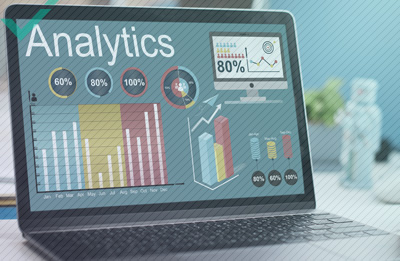Rewind the clock back to 1999, the initial year of their conception, and it would be hard to believe that companies are now integrating emojis into successful ad campaigns. When utilised on social media platforms like Facebook or Twitter, getting the hang of emojis can skyrocket customer engagement by as much as 25%.groten.
THE RISE OF THE EMOJI
The rise of emojis has even solidified their place in the Oxford Dictionary. Featured as the Word of the Year in 2015 was none other than the “face with tears of joy” emoji. The clue for their success is in the name. Typically used to convey an emotion, emojis sustain a more profound impact than standalone text. Today, we are even seeing examples of emoji use in professional emails. The simple fact is, they can achieve something words never could. They add an intended meaning that doesn’t fall victim to the same sort of tone confusion that can easily occur in written text. Especially with the vast amount of content circulating on the web, emojis help clear up confusion and grab attention at the same time. This is especially true when it comes to social media platforms. The following is a prime example of how emojis affect tone:
“Snowed under today, I won’t be able to make our dinner plans. I’ll give you a call later”.
VS
“Snowed under today, I won’t be able to make our dinner plans. I’ll give you a call later :kissing_heart:”.
In the first example, the statement could be perceived as cold, brushing off the intended recipient. By adding an emoji to the end of the message, the end user now knows that the intention to see them is still there. All of this is recognised in an instant, without the need to add a paragraph trying to explain yourself.

WHY USE EMOJIS IN SOCIAL MEDIA?
It hardly seems right to start adding winking eye emojis or blowing kiss emojis to marketing campaigns, so how does this translate into successful engagement from your consumer base? With users often experiencing an overload of information when browsing social media, emojis are an essential tool to help a message or campaign stand out. A study conducted by the University of Minnesota found that emojis don’t even need to be supported by words to provide context. There are even books of poetry that convey an entire narrative using only these symbols. Tweets can be kept short and sweet, focussing on specific text and emoji use, rather than trying to push an entire written message out through multiple tweets. Separating or framing key phrases with emojis is more eye-catching, and allows your audience to hone in on exactly what you’re trying to say.
There are caveats to professional emoji use, however. Less is always more. A 2016 marketing campaign by Chevrolet, #ChevyGoesEmoji, showed that trying to force too many emojis into your campaign can have mixed results. To give them some credit, they later released a series of YouTube videos and Twitter posts aimed at helping users “decode” the intended meaning. But always bear in mind that emojis are there to offer a simplified message that still holds significance. If your target audience needs to decode your message like hieroglyphics, it may be time to rethink your strategy.
KNOW YOUR AUDIENCE
It doesn’t matter whether you are a garden centre, farm, or even a well-known grocery store, the aubergine/eggplant emoji will always mean one thing and one thing only… Knowing what emoji you are using and who it’s intended for are still the most important questions to ask yourself. With a whopping 92% of online users incorporating emojis in some way, it’s safe to say that nearly all audiences will respond well to their use. Also, something to consider is that frequent use of emojis from female users is significantly higher than that of their male counterparts. Furthermore, individual cultures perceive emojis differently, as do different countries around the world. If you are a multinational brand, it would be foolhardy not to take time to understand the relevance of your chosen emojis in the countries you intend to use it. The art of transcreation can be invaluable in tweaking your marketing campaign to cater to diverse audiences.

A GREAT EXAMPLE OF EMOJI USE
So, we now know our audience, we understand the perceived meaning of our chosen emojis, and we have a great series of tweets lined up—but can we drive stronger engagement? Excellent emoji use isn’t just about adding them to the end of a tweet or message to stand out. Instead, it is about driving customer engagement, by asking them to react in kind. This is something the pizza company Domino’s has executed perfectly. Using just a simple pizza emoji, users can order a pizza via Twitter without needing to navigate or choose various toppings from their native website. Domino’s supported this by releasing bold tweets of just the pizza emoji, standing loud and proud in your Twitter feed. Users could respond (after linking their details to Twitter) with the pizza emoji, and an order would be placed immediately. This takes the connotations of emojis one step further; this was more than just a means of displaying an offer, but a way for customers to actively respond and be rewarded with a successful order.
MAKING IT RELEVANT TO YOUR BUSINESS
This approach won’t apply to every business, but it provides a great example of the endless possibilities inherent to emojis. The best marketing campaigns involve a two-way conversation. Asking customers to respond with your chosen emoji for a chance to be included in a prize draw, for instance, is a simple but effective way to boost such engagement. The best part being, it requires minimal effort from your audience—something emojis have always excelled at. The use of emojis should always be organic, not forced. Too many and it could be contrived, too few and you may not stand out from the crowd. Emojis provide a method for humans to recognise emotion and intention in a message, without the need to see someone’s face or hear their tone of voice. It is for this reason that the rise of the emoji shows no signs of wavering.


